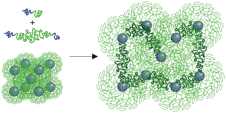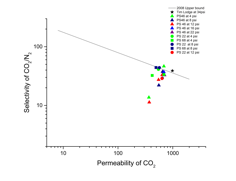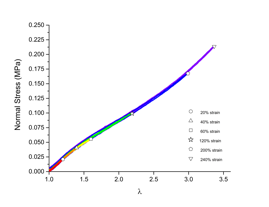Reports: ND752018-ND7: Block Copolymer Based Poly(RTIL)-RTIL Composite Membranes for CO2 Separation and Sequestration
Travis S. Bailey, PhD, Colorado State University
9. Wiesenauer, E. F.; Nguyen, P. T.; Newell, B. S.; Bailey, T. S.; Noble, R. D.; Gin, D. L., "Imidazolium-containing, hydrophobic-ionic-hydrophilic ABC triblock copolymers: synthesis, ordered phase-separation, and supported membrane fabrication", 















